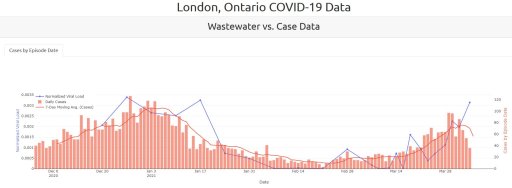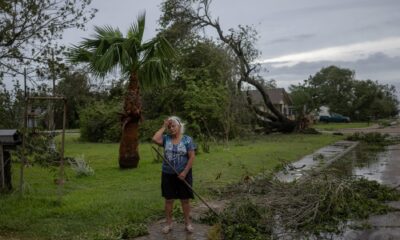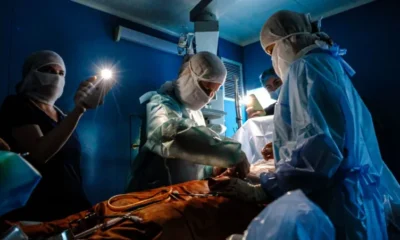Researchers say wastewater surveillance in London, Ont., suggests COVID-19 case counts in the coming week will likely be equivalent to what was seen at the peak of the pandemic’s second wave.
Western University engineering department professor Christopher DeGroot is leading a study collecting wastewater samples and analyzing them at Western’s Imaging Pathogens for Knowledge Translation (ImPaKT) Facility.
Read more:
How your sewage could help track coronavirus in your neighbourhood
“We’re finding that we are able to see an increase in the viral load that we detect in the wastewater, at least several days up to even five days ahead of what we see in daily reported cases,” DeGroot told Global News.
“In just the last samples that we analyzed from Sunday, the numbers were about as high as what we saw in the peak of the second wave. So we can sort of expect, based on our estimations, that the number of cases in the coming week will be roughly equivalent to what we saw around the peak of the second wave.”
The highest daily case count reported by the Middlesex-London Health Unit during the second wave, and the highest so far throughout the pandemic was 161 cases reported Jan. 5, which has since been revised down to 148.
On April 8, the MLHU reported 129 cases.


The viral load data is in blue. The graph also shows daily case counts and the 7-day moving average of cases specific to the City of London.
via 519covid.ca
According to the researchers, the virus that causes COVID-19 “is excreted in the feces of infected individuals and can be detected in municipal wastewater.”
Evidence suggests that the viral load in the feces is degraded to the point where it’s not infectious, but researchers can use that information to determine the local extent of COVID-19 infections.
They say it provides advantages over nasal swabs because wastewater surveillance can allow for “monitoring of asymptomatic infected individuals, who are less likely to get tested”; provides notice of changes in case numbers since the virus shows up in feces before symptoms start; and allows for information on a large scale at a lower cost than widespread asymptomatic testing.
Read more:
COVID-19 has changed. Should our outdoor behaviour shift too?
Medical officer of health Dr. Chris Mackie was hesitant to offer predictions but did note that case counts today reflect transmission that occurred as much as two weeks prior.
“Even if the lockdown measures work perfectly, we won’t see the effects of that for at least two weeks. So there’s no sense that we’ll be out of this any time in the very short term,” he began.
“The variants of concern being in our community in a big way is the big unknown. Especially with the rapid rise that we’ve seen recently, we could easily see case counts as high as 200 over the next couple of weeks before things turn for the better.”
DeGroot says at this time they are only identifying COVID-19 on a whole and not specific variants, but that is set to change.
“Looking into variants is something that we’re working pretty hard on the lab with Professor Eric Arts, who’s a world-renowned virologist and runs the ImPaKt facility. So we are working on some techniques that we can use to look at variants of concern, but nothing to say on that just yet.”
The data collected through the wastewater surveillance is reported to the health unit on a weekly basis, or earlier in the case of anything “out of the ordinary,” DeGroot says.
Read more:
Hamilton joins province’s $12M initiative to detect COVID-19 in wastewater
The information provided to the health unit is also broken down into results from each of the five wastewater treatment plants and associated catchment areas.
Data is also available for the public, though it’s not broken down on a plant by plant basis.
“But I can say that at this time in London, anyway, there’s not a particular area that is significantly higher than any other,” he says, noting that with only five plants, each covers a large area.
“If you were to look at on a postal code basis, which is something that they do with the nasal swab testing, you may notice something there.”
The local research is part of a larger $12 million investment from the province in wastewater surveillance.


Must See
-




Entertainment
/ 2 weeks agoFaveSzn’s Revelation: Dating Choirmaster at 10 and Sexual Curiosity
Nigerian singer, Chidozie Ugochinyere, popularly known as FaveSzn, has revealed that she once dated...
By Flying Eze -






Europe
/ 2 weeks agoWhy Hungarian Prime Minister Orban visited
Two months later, the leaders of China and Hungary met again. Hungarian Prime Minister...
By Flying Eze -






News
/ 2 weeks agoThree dead and millions without power as Tropical Storm Beryl hits Texas
Man, 53, and woman, 74, killed by fallen trees and third person drowns amid...
By Flying Eze



